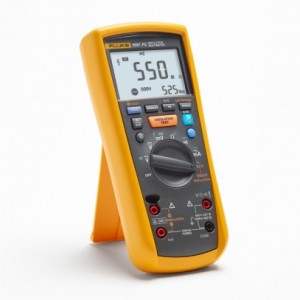What are Insulation Testers Used For?
 Insulation testers are tools used in testing the condition of electrical insulation in various components. The kind of tester in use will depend on the type of testing and the equipment undergoing evaluation. It will also matter why the testing is being conducted. As electrical current travels through a circuit, some of it gets out along the way. It is why insulation materials are used to ensure the containment of current as much as possible. However, even with the best insulations, there may be minimal losses of current and that is why tests are crucial. When current escapes, it causes inefficiency because equipment or machinery are not able to perform at their optimum. Insulation testers allow you to see how much current is being lost and how effective particular insulation materials are. Here are some primary motivations for conducting insulation tests.
Insulation testers are tools used in testing the condition of electrical insulation in various components. The kind of tester in use will depend on the type of testing and the equipment undergoing evaluation. It will also matter why the testing is being conducted. As electrical current travels through a circuit, some of it gets out along the way. It is why insulation materials are used to ensure the containment of current as much as possible. However, even with the best insulations, there may be minimal losses of current and that is why tests are crucial. When current escapes, it causes inefficiency because equipment or machinery are not able to perform at their optimum. Insulation testers allow you to see how much current is being lost and how effective particular insulation materials are. Here are some primary motivations for conducting insulation tests.
For Safety
Safety is one of the core reasons to do insulation testing. Electrical equipment is used for a lot of things and depending on its use. A lot of people may come into contact with it. The current that escapes through the wires can cause serious accidents. Performing insulation tests give assurances that electrical machinery is safe for use for individuals and the public. By using insulation testers, experts ensure that installations meet safety standards regarding wiring and connections. For work environments that require electrical equipment, it is essential for workers to observe other safe at work practices to minimise the risks of accidents. Such practices include; wearing flame-resistant clothing when working with open circuits, standing on insulations mats, removing jewellery, and using insulated tools among others.
For Maintenance
Another reason for insulation testing is for maintenance. Checking the insulation integrity of electrical equipment is one of the best ways to keep it in good condition. Any deficiencies in the insulation of wires can degrade the integrity of the equipment severely. Electrical systems have to suffer exposure from elements such as dust, moisture, extreme temperatures, vibrations, stress, and all these contribute to degradation. Doing tests regularly will highlight any imperfections that require correcting. Fixing issues promptly will ensure that electrical systems continue to function at their best for a long time.
How to Do Testing Right
There are ways of doing insulation tests that will give the best results. For one, the insulation tester should never connect to an energised conductor or equipment. The equipment that is undergoing the insulation test should be shut down at the switches, fuses, and circuit breakers. Any branch circuit conductors, grounded, and grounding conductors that connected to the equipment undergoing testing should be disconnected. Leakage of current can lead to inconsistent reading on the insulation tester, so it is vital to check the fuses, circuit breakers and switches for leakages. Insulation testers should never be used in explosive environments because if the insulation of equipment is compromised, then the tester can create arcing. It is essential to wear insulated rubber gloves when connecting the leads. The insulation tester in use must have proper certification and should have proof of verification from a lab. Meter readings should also have safety ratings.
Types of Testing
Knowing the different types of current testing that insulation testers evaluate is paramount. Testing the resistance to current flow of a particular machine is one of the ways to tell the quality of the insulation. An insulation tester can check for total current insulation testing. In this type of test, high resistance means that the current escaping is minimal while low resistance means that a lot of the current is not getting transmitted. Total current testing involves capacitive current, leakage current, and absorption current.
Capacitive current is the burst of current that results from the initial application of voltage. This current type begins with high reading and then goes down as a conductor attains full charge.
Leakage current is detected through and over the insulation. If the leakage current continues to increase over time, it means that the insulation is losing its integrity.
Absorption current drops just like capacitive current but not as fast. This drop in current happens as the insulation slowly starts to absorb it.
Insulation testers are also used for proof testing, maintenance tests, short time resistance tests, step voltage tests, and time-resistance tests.
Insulation testers are critical tools for professional as well as home use. When installing new equipment or appliances, it is essential to use testers to check the condition of their insulation. It is vital to prepare the insulation tester beforehand to ensure correct readings. Observation of the necessary safety precautions is essential to ensure safe installations.

No comments yet. Be the first!